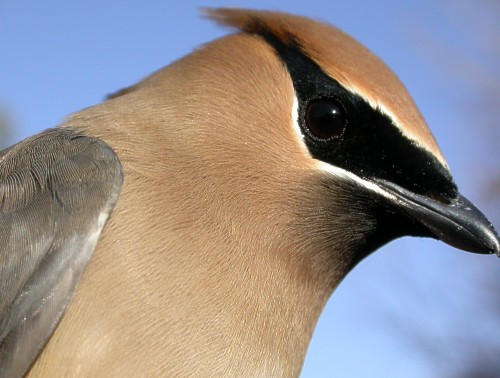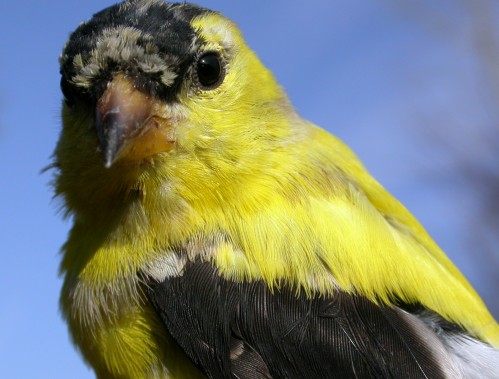|
|
|
SPRING
MIGRATION MONITORING PROGRAM |
|
Week 3: April 11 - April 17, 2005 |
Welcome
to the McGill Bird Observatory weekly report. Click
here for a complete listing of our archives. Comments or questions are welcome at mbo@migrationresearch.org.
|
PICTURE OF
THE WEEK: |
|

On Tuesday morning a
flock of over 40 Cedar Waxwings was feeding on the buckthorn
berries, and 7 individuals got caught in net C2. The group
included all four age/sex classes,
giving us a great opportunity for comparison. The individual
in this photo is a second-year
male, the sex evident from the extensive black on the chin. (Photo by Marcel Gahbauer)
|
| |
THIS
WEEK |
SPRING
TOTAL |
YEAR
TOTAL |
SITE
TOTAL |
| #
birds (and species) banded |
17
(8) |
36
(10) |
95
(17) |
1016
(49) |
| #
birds (and species) repeat |
5
(2) |
5
(2) |
39
(2) |
217
(17) |
| #
birds (and species) return |
-- |
2
(1) |
12
(3) |
14
(4) |
| #
species observed |
41 |
54 |
58 |
143 |
| #
net hours |
61.2 |
176.5 |
234.5 |
1209.0 |
| #
birds banded / net hour |
27.8 |
20.4 |
41.8 |
84.0 |
|
|
Note: table does
not include nocturnal banding (owls) |
Bander-in-charge:
Marcel Gahbauer
Assistants: Jean Demers, Christina Donehower, Gay Gruner,
Marie-Anne Hudson, Barbara MacDuff, Michael Mayer, Crissy Ranellucci,
Clemence Soulard
Notes:
The weather has been glorious over the past week, consistently sunny
and pleasant. However, this stable high pressure system has also
been accompanied by steady light north winds, and that has resulted in
migration largely stalling. Early in the week new migrants included Yellow-bellied Sapsucker and
Brown Thrasher, and on Saturday our first ever Pied-billed Grebe was
observed, but other than that no new arrivals were noted.
Banding
this week took place only on Tuesday due to logistical constraints.
We were fortunate to catch part of the flock of waxwings that has been
hanging around over the past week, though the Bohemians evaded us.
The rate of capture remains relatively low, but improved over last week,
and will likely continue to rise as the diversity of migrants increases
and more birds settle into the lower vegetation rather than just flying by
overhead.

The moult of the American
Goldfinches continues! This second-year male caught this
week is again much more yellow than those we've seen previously this
year. However,
patches of old beige feathers remain conspicuous on the crown and (less
visible from
this angle) the nape. (Photo by Marcel Gahbauer)
|


